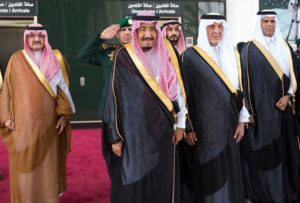High-speed, 450-km rail link to connect the pilgrimage cities of Makkah and Madinah
King Salman Bin Abdulaziz Al Saud recently launched the Haramain High-Speed Railway, the biggest electric speed train project in the Middle East, at Jeddah’s Al-Sulaymaniyah station.

The inauguration ceremony was attended by Prince Khaled Al-Faisal, Adviser to the King and Governor of Makkah, along with several senior officials and dignitaries.
The ceremony concluded with the King taking the train to Madinah approximately 450km away. The train was captained by a Saudi national driver, Abdullah Al-Ahmadi.
Minister of Transport, Dr. Nabil Al-Amoudi said that King Salman and Crown Prince Mohammed Bin Salman Al Saud had directed the implementation of comprehensive work plans for the transport industry in the Kingdom.
The Haramain High-Speed Railway project is in line with the objective of Saudi Arabia’s Vision 2030. Transport is a main pillar of the national economy and a key driver of the economic renaissance that will take place under the Vision 2030 strategy.
Rumaih Al-Rumaih, chairman of the Public Transport Authority (PTA) and acting president of the Saudi Railways Organization (SRO), said that supervision of the project had ensured the operational efficiency of the project and all facilities were of the highest quality.
According to Al-Rumaih, the train can annually transport 60 million passengers on board a fleet of 35 trains, each consisting of 417 seats. The trains are equipped with the latest technology to ensure comfort and safety.
With a speed of 300 km and hour, Al-Rumaih said that the train would cover a distance of 450 km, linking stations in Makkah, Jeddah, King Abdul Aziz International Airport in Jeddah (KAIA), King Abdullah Economic City (KAEC) in Rabigh and Madinah.
The SAR60 billion (US$16 billion) mega project was a major engineering feat and went through three stages before screens could display journey timetables at the stations. The first stage, which was carried out by a consortium of national and international companies, started with the construction of 130 bridges and 850 water channels, a process in which some 150 million cubic meters of sand and rocks were removed to prepare the route for the train.
